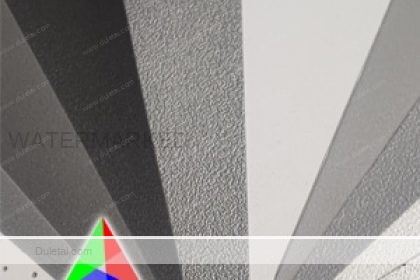
Views: 2344
When you’re looking to purchase a new projector screen, then there are some things that you’ll want to think about first. Getting the right size screen is important, as well as the method it uses to stand up or retract. But, you should also consider what fabric and material the screen is made out of.
If you want a truly good experience with your projector, then using the right screen fabric with it is essential. But what is the best fabric to use for a screen projector? Well, we’re going to look at some of the fabrics that you can use with a projector screen to give the best experience.
Which fabric is best for a projector screen?
If you’re looking for the best fabric for a projector screen, then the right answer is to use a white blackout cloth. You can pick this up for a very reasonable price, and you can can even choose to paint your blackout cloth to create an even better experience.
You can usually pick up this kind of blackout cloth online, or from your local hardware store. Getting the right cloth is important for your picture quality. Plus, if you make it yourself, you’ll need to put in some effort to get the right aspect ratio.
Though I think it’s the best, this isn’t the only material that you can use as a projector screen. So, let’s look at some of the best options out there so you can find the right one to suit you.
Blackout Cloth
If you’ve ever worked the night shift, then you’ll know what material I’m referring to here. It’s the same material used for blackout curtains, and it’s designed to specifically keep out light – it’s made from cotton and polyester. It also works really well as a projector screen, as it’s non reflective and it can be viewed from any angle.
As I also mentioned, you can actually choose to add some paint to your blackout cloth to give it an even better appearance. Whilst you could do this with a roller, it’s probably a better idea to use some spray paint on the cloth. You also might want to use some primer too, which should give you an even better finish.
If you’re looking to make your own projector screen, then this isn the best material to use. However, there are other options out there too that can work as a makeshift fabric for your projector. One good idea is to use roller blinds, which can make for a good projector screen material.
Paint/Wall
Although the majority of the time you’re going to want to use a sort of fabric as your screen, there’s also another alternative which has no fabric at all. I’m talking about using paint as the screen itself, as you can get specially made paint that’s designed specifically for projecting images onto it.
The colour that you use for the paint is going to be important. Most people tend to opt for a white colour as you’d expect. You can also look at going for a black or grey colour too, and it will all depend on the time and ambience of the room when you’re going to use the projector.
You’ll also have to consider the style of the paint you’re using as well. If you use matte paint, then the picture can be a little dark and there will be no vibrancy in the image. On the other hand, if you use glossy paint, then it is going to be too reflective.
From a negative perspective, with a wall you’re not going to have complete control over how smooth the surface is. A screen is very smooth, but your wall may have little bumps and nicks in it that may effect the quality of your viewing.
Other Options
These are the best options for those looking for a DIY solution. But, there are other materials out there you can use, and that are used by larger companies making screens professionally. Here are a few of them.
Conclusion
In conclusion, the best option if you’re looking for a good material to use as a projector screen is a type of blackout cloth. This fabric isn’t particularly expensive, and can easily be used to create a DIY projector screen.
The thing is with DIY screens is that they can take a little while to make, and if you’re not entirely sure on the colour screen you need, this can make it even more difficult.
Of course, you could also avoid creating your own DIY screen and opt to purchase one ready made. Nowadays, screens are more reasonably priced than ever, and you might even be able to get one for not much more than it would cost to do it yourself.
